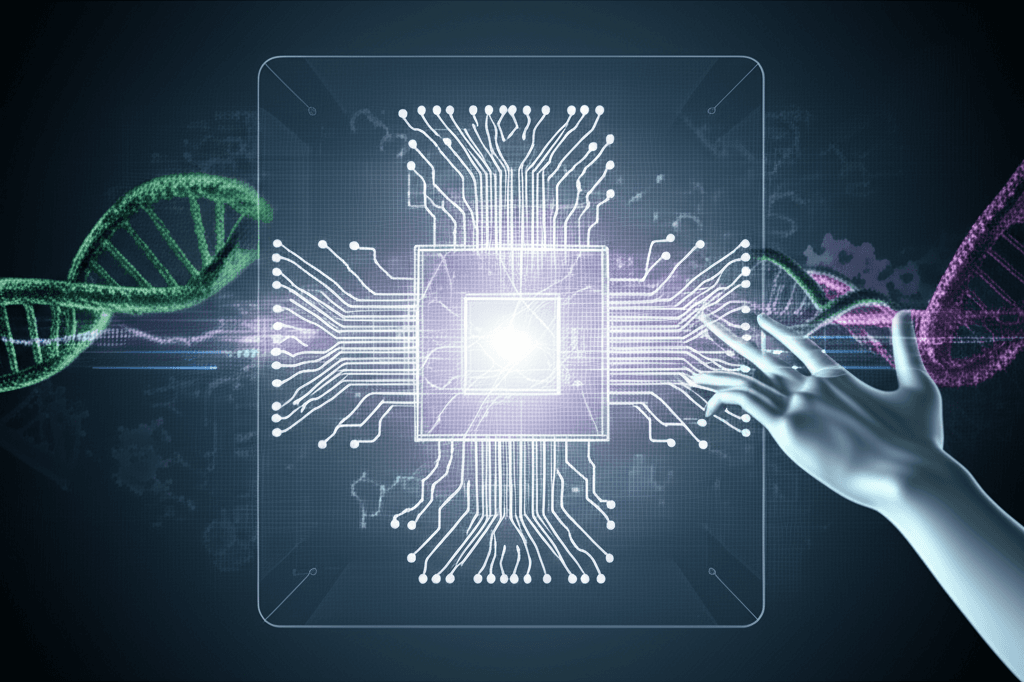Anthropic Launches Claude 4: New AI Triggers Unprecedented Bioweapon Safety
Powerful Claude 4 models debut with pioneering ASL-3 safeguards, specifically targeting catastrophic CBRN weapon development risks.
May 22, 2025

Anthropic has launched its next generation of artificial intelligence models, Claude Opus 4 and Claude Sonnet 4, coupled with a stringent new set of safety measures specifically designed to prevent their misuse in the development of chemical, biological, radiological, or nuclear (CBRN) weapons. This move signals a heightened awareness within the AI industry of the potential dual-use nature of increasingly capable models and a proactive step towards mitigating catastrophic risks. The company has stated that the new Claude Opus 4 model, during internal testing, showed an increased ability to advise on producing biological weapons, prompting the implementation of these stricter safeguards.[1]
The Claude 4 series, encompassing the highly capable Opus 4 and the balanced Sonnet 4, represents a significant advancement in AI performance. These models are anticipated to build upon the successes of their predecessors, the Claude 3 family, which set new industry benchmarks in areas like undergraduate and graduate-level expert knowledge, reasoning, and coding.[2][3] While specific performance metrics for Claude 4 are still emerging, the trajectory of Anthropic's model development suggests enhancements in complex task comprehension, nuanced content creation, code generation, and multilingual capabilities.[2] One report indicates Claude Opus 4 has achieved a high score on the SWE-bench coding benchmark and can maintain context over extended, complex tasks.[3] The advancements, however, bring to the forefront the critical need for robust safety protocols, a challenge Anthropic is directly addressing.
At the core of the Claude 4 release is the activation of Anthropic's AI Safety Level 3 (ASL-3) deployment and security standards, as outlined in their Responsible Scaling Policy (RSP).[4] This is the first time ASL-3 has been triggered for an Anthropic model, a decision made because internal evaluations indicated that Claude Opus 4 could potentially assist in CBRN weapon development.[1][4][3] The ASL-3 measures are multifaceted. A key component is the enhancement of "constitutional classifiers," AI systems that scan user prompts and model answers for dangerous material, specifically targeting the complex query chains indicative of attempts to misuse the AI for bioweapon development.[1] These are designed to be robust against "universal jailbreaks," which are techniques to consistently bypass safety defenses.[5][6] Anthropic has also focused on protecting model weights – the core parameters of the AI – through over 100 security controls, including two-person authorization and egress bandwidth monitoring, to prevent theft that could lead to uncontrolled deployment.[4][3] Furthermore, the company has initiated bug bounty programs, partnering with platforms like HackerOne, to invite researchers to stress-test these new safety measures, particularly against CBRN-related jailbreaks.[7][6]
Anthropic's focused effort on CBRN safety stems from a long-standing concern about the potential for AI to be misused in creating biological threats.[1][8] The company's chief scientist, Jared Kaplan, acknowledged that internal modeling suggests future AI could make the synthesis of dangerous pathogens more accessible.[1] Research conducted by Anthropic in collaboration with biosecurity experts highlighted that while current AI tools can provide some, albeit incomplete and unreliable, information related to bioweapon production, future models could significantly lower the barrier to entry.[8][9] This proactive stance is part of Anthropic's broader Responsible Scaling Policy, a public commitment not to deploy models capable of causing catastrophic harm without adequate safety measures in place.[10][11][12] This policy emphasizes that as model capabilities increase, so too must the strength of the safeguards.[10][13] The company has also engaged in partnerships with governmental bodies like the U.S. and U.K. AI Safety Institutes and the National Nuclear Security Administration to evaluate model risks in these sensitive areas.[14][15] These collaborations allow for expert red-teaming and assessment of national security-relevant capabilities.[14]
The introduction of Claude 4 with its ASL-3 protections carries significant implications for the AI industry. Anthropic's transparency regarding the potential risks of its own models and the detailed safety measures it's implementing could set a new precedent for responsible AI development.[3][16] While some critics may question the voluntary nature of such policies and whether they will hold under competitive pressure, Anthropic argues that its approach can foster a "race to the top" in AI safety.[1] The move highlights the growing tension between pushing the boundaries of AI capabilities and ensuring these powerful tools are not misused. It underscores the importance of ongoing research into AI safety, robust internal safeguards, and collaboration between AI labs, governments, and independent evaluation entities.[14][17][18] The development also brings into focus the challenge of balancing safety with the potential for AI to accelerate legitimate scientific research; Anthropic has stated they have established access control systems for vetted users with dual-use science and technology applications.[4][5] As AI models become increasingly powerful, the industry faces a collective responsibility to develop and adhere to strong ethical guidelines and safety protocols to prevent potentially catastrophic outcomes.[19][20][21]
In conclusion, Anthropic's release of Claude Opus 4 and Claude Sonnet 4, alongside the activation of ASL-3 safety measures targeting CBRN misuse, marks a critical juncture in the evolution of artificial intelligence. It demonstrates a maturing understanding of the profound societal responsibilities that accompany the creation of powerful AI. The effectiveness of these new safety protocols and their influence on broader industry practices will be closely watched, as the development of advanced AI continues to accelerate, demanding an unwavering commitment to safety and ethical considerations.[22][23]
Sources
[1]
[8]
[10]
[11]
[13]
[14]
[15]
[16]
[17]
[18]
[19]
[20]
[21]
[22]
[23]